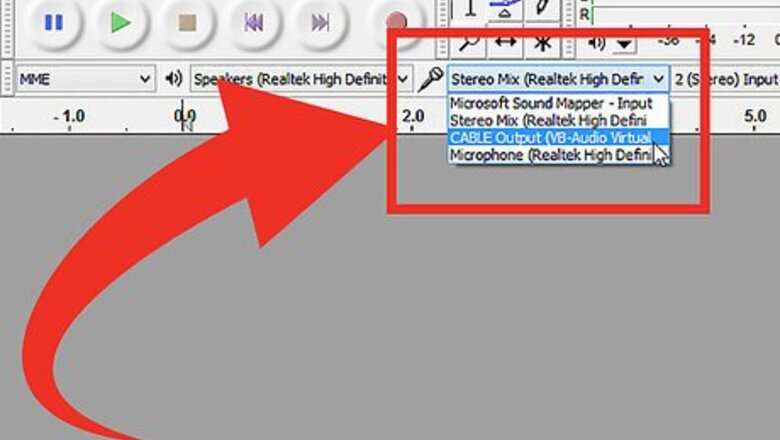
views
Recording
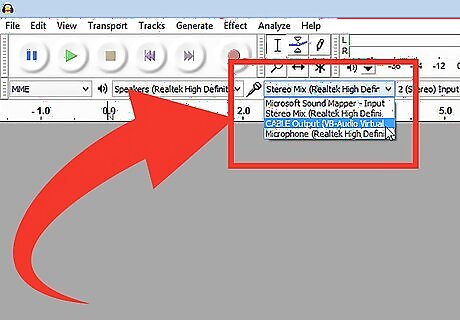
Connect your gear. In your instrument preferences, set the output destination of your instrument. Set the input of Audacity to match the output from your instrument. In this example, the signal is routed through the Soundflower interface from a software synth’s output to Audacity’s audio input. While sound cards and interfaces vary, it’s a good practice to monitor your actual instrument to prevent latency issues. Because latency is always a factor when monitoring the recorded signal, it’s very difficult to find your groove when playing. In Audacity, set your preferences as shown:Use Audacity Step 1Bullet1.jpg
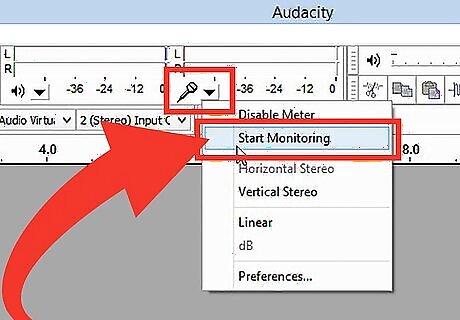
Confirm connection. Check to make sure your outputs and inputs are properly routed by first selecting Start Monitoring from the popup menu below the input meters (by the microphone icon), then playing your instrument. The LR input meters should respond.Use Audacity Step 2Bullet1.jpg If the meters are hitting 0dB, use the Input Volume Slider to lower the input level so that the meters only approach 0 during the loudest sections.
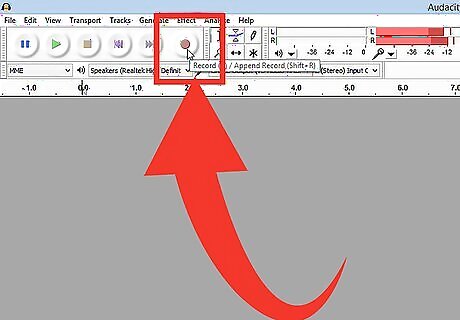
Choose how to activate recording. When everything is connected properly, and your levels are set, you’re ready to record. You have two options: Press Record and start playing. There will generally be some silence at the beginning of your track. This can be trimmed away when you’re done recording.Use Audacity Step 3Bullet1.jpg Alternately, you can enable Sound Activated Recording in your Recording preferences. Check the Sound Activated Recording checkbox, then set the Sound Activation Level (DB)—the lower the number, the quieter the sound that will trigger recording. This is useful if, for example, you are recording in another room and don’t want to have a long silence at the beginning of your track as you walk back and prepare to play.Use Audacity Step 3Bullet2.jpg
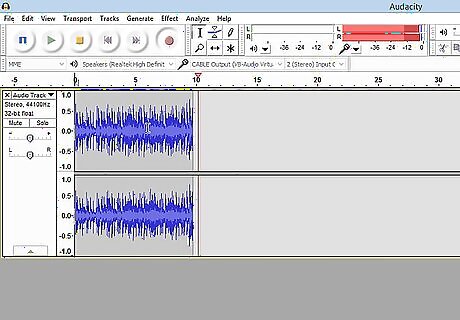
Record your track. Whichever method you choose, it’s now the moment of truth! Press the red Record button (or press “R”, and when you’re ready, start playing. You’ll see the waveforms written to your track as you play. Note: While this should not generally be the case, if everything is set as described above, if you are flat lining (i.e., the waveform displays as a straight line) when you record, that means that signal is not getting from your instrument to your track. Confirm your connections and try again.
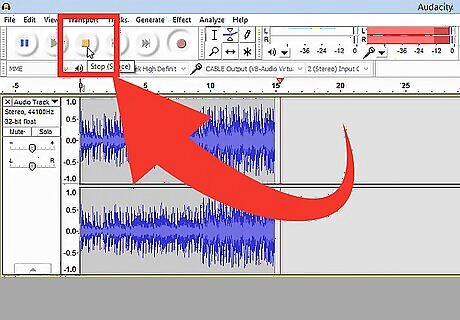
Stop recording. When you are finished, press the square yellow Stop button. You should see something similar to the image above. If you chose Sound Activated recording, Audacity will automatically stop recording when the sound drops below the threshold level. To add additional tracks while listening to previously recorded tracks, make sure “Overdub: Play other tracks while recording new one” is checked in Preferences: Recording.
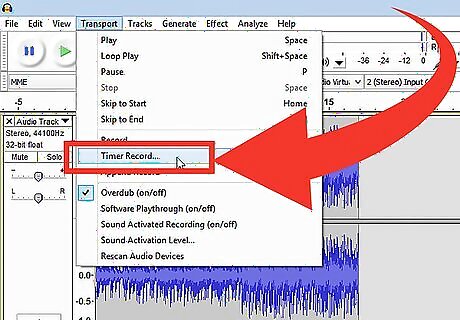
Set a date and time to record. There’s an alternate recording option that most software sound recorders do not have, and that is Timer Record. From the Transport menu, select Timer Record..., or press Shift-T. In the resulting window, you can set the Start Date and Time, and either the End Date and Time, or the Duration. This lets you set your recorder to turn on when you are not around. Why would you do this? Because you can!Use Audacity Step 6Bullet1.jpg
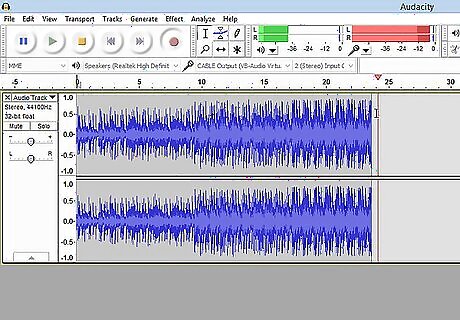
Extend your recording. If you want to add additional material to your existing recording, press Shift-Record, or type Shift-R, and new material will be appended at the end of the existing recording on the current track.
Playback
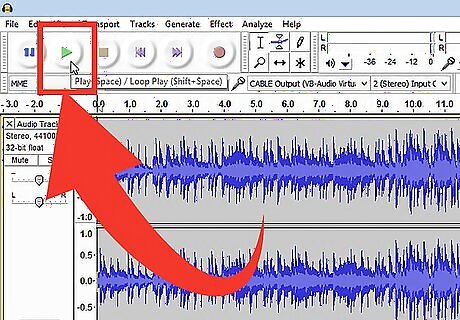
Review your recording. When you have finished your tracking, give it a listen. Click on the triangular green Play button (or press the Space bar). Your track should play from the beginning and will automatically stop at the end of your track. Pressing Shift while you press Play or the Space bar will loop your track until you click the Stop button or press the Space bar again.Use Audacity Step 8Bullet1.jpg To loop a specific section, make sure the Selection Tool is enabled, then click and drag over the section you want to loop. Note: after you make your selection, press “Z” for the software to automatically find the zero-crossing point: the point where the start and end waveforms are at 0 amplitude (start and end at the same sound level). Depending on the nature of the loop and the source material, this will often give you a very clean loop without clicks or pops.Use Audacity Step 8Bullet2.jpg
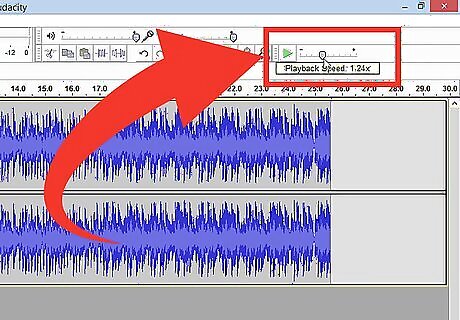
Change the playback speed. You can alter the playback speed easily, which can come in handy if you are working out a solo or trying to learn a difficult piece of music. Drag the Playback Speed slider to the left to slow the track down, or to the right to speed the track up, then press the green “Playback at Speed” arrow to play your track back at the new speed. To make changes, adjust the speed and click the arrow again.Use Audacity Step 9Bullet1.jpg
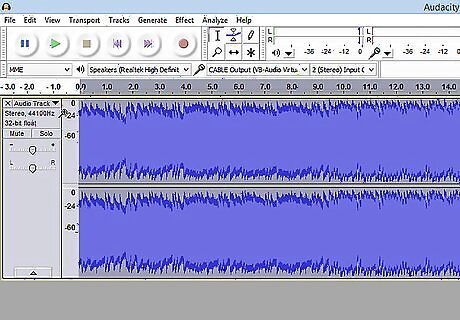
Choose your view of the track. The default view is the waveform viewed in linear form. Without going into detail, the linear scale is viewed as a percentage of level between 0—or silence; and 1, or maximum level. You can also view the track in other formats: Waveform (dB) which shows the waveform in decibel levels. It will generally appear “larger” than the linear view.Use Audacity Step 10Bullet1.jpg Spectrogram, which is a colorful FFT (Fast Fourier Transform) view of the audio.Use Audacity Step 10Bullet2.jpg Pitch, which shows pitches from high at the top of the track, to low pitches at the bottom. It’s very interesting with rich textures, and chords.Use Audacity Step 10Bullet3.jpg
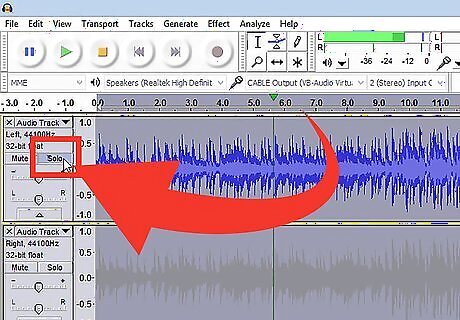
Solo tracks. If you have multiple tracks playing, and only want to hear one of them, click on the Solo button in the Track control area to the left of the waveform. All other tracks except those that are soloed will be silenced. This is very useful if you want to, for example, get a good level between the bass and the drums.
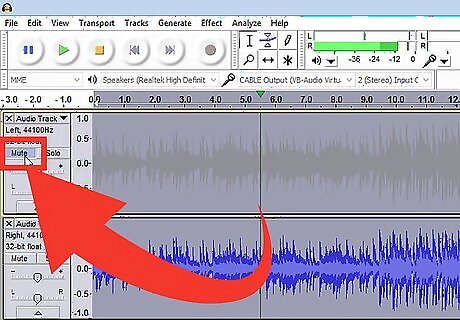
Mute tracks. If you have multiple tracks playing, and want to silence one or more of them, click on the Mute button in the Track control area to the left of the waveform. All other tracks but the muted track or tracks will still sound. This is very useful if you want to, for example, compare 2 takes, or thin down the mix temporarily.
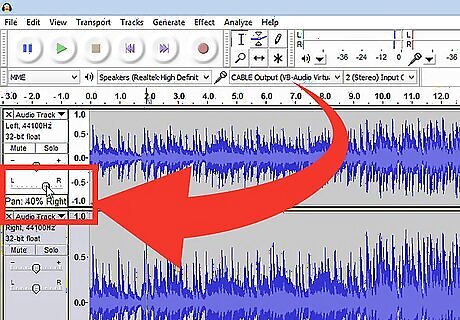
Set your pan and level. The Pan control will place your sound in the stereo field, from left to right, to any point in between. The level control sets the volume for that track.
Editing
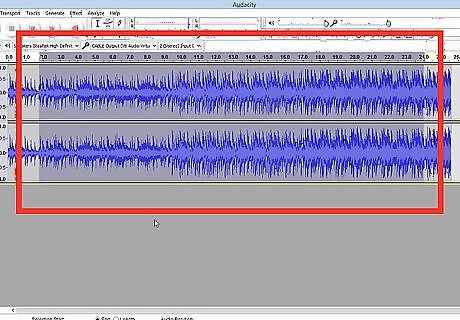
Trim your track. If you’ve recorded more than you need, to save editing time, trim your track to only what you intend to keep. Start by making a safety backup in case things go awry, and then proceed as follows: Choose the Selection Tool from the toolbar. Select the audio you want to keep. Choose Loop Playback (Shift-Space) and listen to your edit a few times to make sure it’s good. Adjust as necessary until it sounds right, then from the Edit menu, select Remove Audio, then select Trim, or simply press Command-T (Control-T on a PC). The audio on either side of the selection is removed from the track.Use Audacity Step 14Bullet1.jpg After trimming, move your audio, if necessary, to the correct location by selecting the Time Shift tool, and dragging the sound to the proper location.
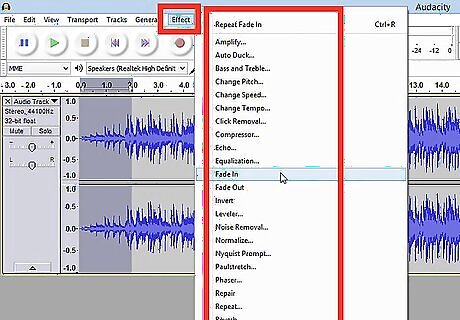
Apply effects. You can apply a variety of effects, from those built into Audacity, to VST effects, and effects native to your OS. With the selection tool, select all or part of your track. From the Effect menu, choose your desired effect. For this example, we’ll use Echo, as applied to a simple click track. Set any parameters called for by the effect, listen to the preview, and when it’s how you like, press OK. The effect will process and display the result. The example below is the raw click track on top, and the echoed click track on the bottom. You can process the same track with many effects, though it’s possible to amplify the waveform too much, resulting in ugly digital distortion. If that happens, undo to the last step before distortion kicked in, and instead of applying your next filter, apply an Amplifier effect, set to -3dB. If your next process still results in distortion, undo the distorting effect and the Amplify effect, then redo the Amplify effect at a stronger level. -6dB would be good. Note: It’s always a good idea to duplicate a track (Command or Control-D) before doing any editing that changes the waveform.
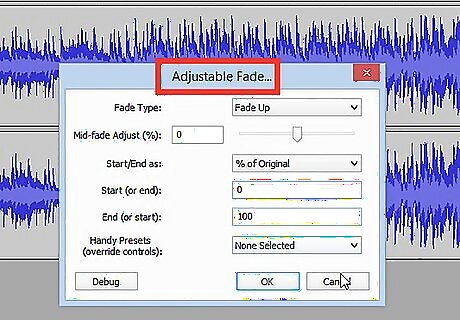
Experiment freely. Try all the filters, and see what they do and how the sound with your source material.
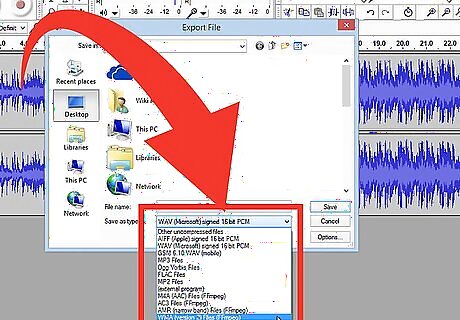
Save your finished sound file. When you’re done editing, mixing, trimming, and polishing your sound file into a rare gem of musical beauty, you will want to save it for posterity and possible fame and fortune. From the File menu, select Export..., then choose the desired format—from AIFF to WMA and many others in between.




















Comments
0 comment